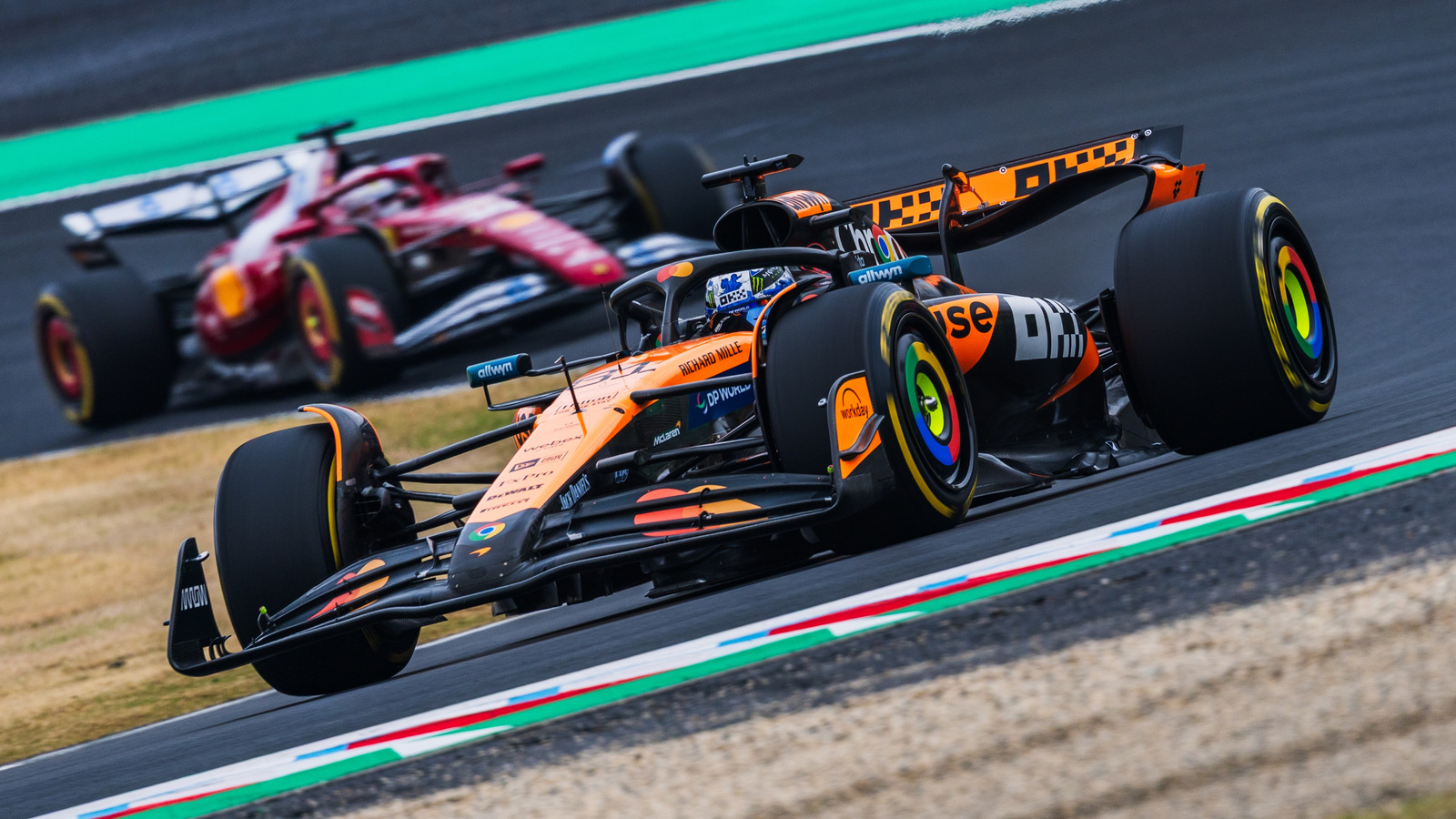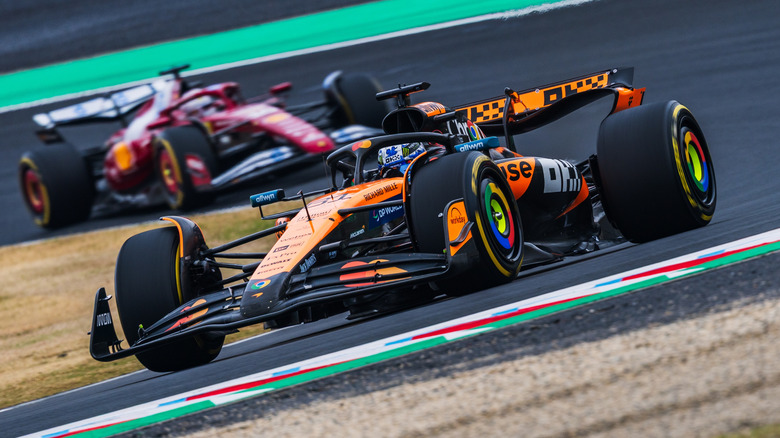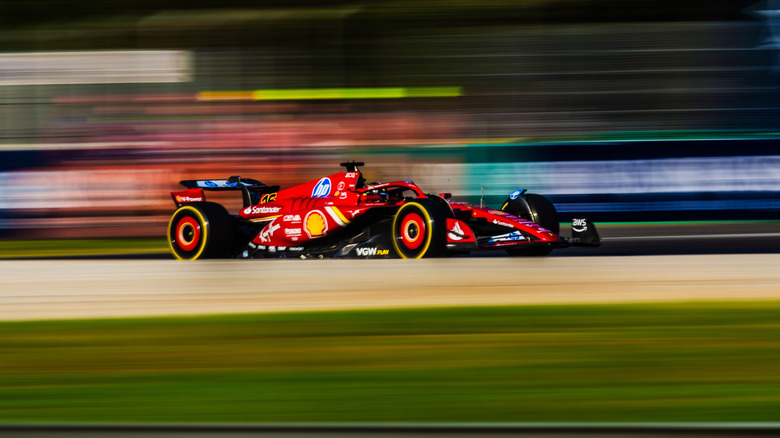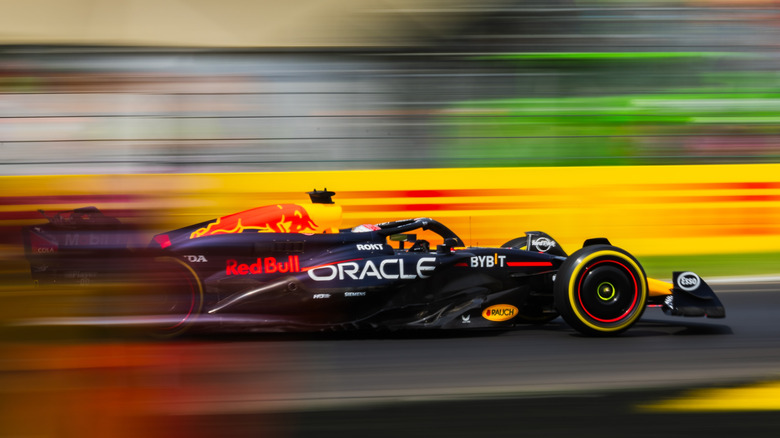Formula 1 has released an update on its Net Zero by 2030 program, in which the world’s premiere motorsport is trying to have, you guessed it, net zero carbon emissions by 2030. And while lots of things may not be going as well as we hoped these days (gestures broadly), in this case, it’s actually good news! Five years into the endeavor, the sport has reduced its emissions by 26%, or halfway to its goal. To clarify, “net zero” doesn’t mean zero emissions, it means you don’t emit more CO2 than you had to burn to make the fuel in the first place.
Specifically, in 2019 F1 promised to cut carbon pollution by 50% compared to what it did in 2018. In fact, this year, F1 went back and revised their calculations down for what it emitted in 2018. In other words, it had to work even harder to slash down to 50% of the revised, lower number, which makes the motorsport’s progress even more impressive.
All in, F1 determines that it emitted 168,720 tons of CO2 equivalent (tCO2e) in 2024, vs 228,793 in 2018. What’s more, there are three additional races on the calendar nowadays, 24 vs 21. This isn’t the sort of thing that happens without a serious, sustained commitment; we’ve all seen green initiatives fall by the wayside before. Hats off to FIA for this one.
Biofuels for the win
A major area of focus was a switch from traditional fossil fuels to renewable biofuels wherever possible. Formula 1 flies its people on Qatar Airways and its cargo on DHL planes running sustainable aviation fuel (SAF), good for a net reduction of 8,000 tCO2e, or 19%. In addition, it redesigned its containers to fit on Boeing 777 freighters, a more efficient aircraft; that alone led to another 9,000 tCO2e saved. In Europe, even the DHL cargo trucks run on biofuels.
Best of all, the vehicles you actually care about — the F1 race cars themselves — are also going to start running on biofuels, starting in 2026. This is a specific biofuel developed by F1 directly, using non-food biomass and “genuine” household waste (none of that counterfeit household waste) which is then scorched at 700 degrees C before chemical reactions turn it into good old liquid fuel. This is a drop-in solution, meaning nothing on the cars or pipes have to change; just load up the car with the finest waste and go vroom. F2 and F3 cars already run on the stuff now.
Formula 1 seems pretty bullish on its proprietary biofuel, mentioning how this drop-in solution could have “potential global benefits.” Translation: If it goes well, maybe it could sell posh household waste more widely. If Formula 1 does more to save the world than the American government, well, that’s a low bar, actually, but I’d still be impressed.
Savings around the paddocks and the factories
At the actual races themselves, F1 is saving 12% per event vs 2018. The various parties involved use renewable energy where they can, and in fact, there are fewer parties there than there used to be. F1 switched to a remote broadcast system which allowed it to keep a lot of staff at home base in the UK rather than flying out to the tracks all over the world.
Meanwhile, back at the factories where the teams try and fail to build something faster than a McLaren, green energy sources have slashed emissions by 34,000 tC02e, or a truly impressive 59%. Even tiremaker Pirelli got in on the action, using entirely renewable energy in the creation of its rainbow-colored wheels, which are made from sustainably forested rubber and then recycled afterwards.
Really, anything that is even involved in the process of making cars go in circles quickly has put a lot of effort into polluting less. Amazing what kind of results you can get when you try.





